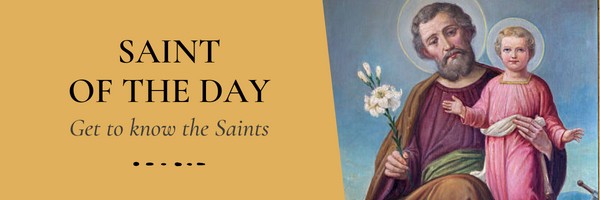We ask you, urgently: don't scroll past this
Dear readers, Catholic Online was de-platformed by Shopify for our pro-life beliefs. They shut down our Catholic Online, Catholic Online School, Prayer Candles, and Catholic Online Learning Resources essential faith tools serving over 1.4 million students and millions of families worldwide. Our founders, now in their 70's, just gave their entire life savings to protect this mission. But fewer than 2% of readers donate. If everyone gave just $5, the cost of a coffee, we could rebuild stronger and keep Catholic education free for all. Stand with us in faith. Thank you.Help Now >
Johann Müller
FREE Catholic Classes
(Regiomontanus).
German astronomer, b. in or near Königsberg, a small town in lower Franconia (Dukedom of Coburg), 6 June, 1436; d. in Rome, 6 July, 1476. The name of the family agreed with the trade of the father who operated a mill. Regiomontanus signed himself Johannes de Monteregio, while in foreign countries he was known as Joannes Germanus or Francus. His calendars were published under various names, like Meister Hans von Kungsberg. About the age of twelve he was sent to Leipzig to study dialectics. In the university matriculations (published by Erler, 1895) his name is not registered. Hearing of the celebrated astronomer Peurbach (George of Peurbach in Upper Austria, 1423-61), Müller left Leipzig for Vienna, where he was matriculated in 1450 as Johannes Molitoris de Kunigsperg. In 1452 he received the baccalaureate and in 1457 the title Magister . Lectures of his at the university are recorded as follows: in 1458 on perspective, in 1460 on Euclid, in 1461 on Virgil's Bucolics. His master and friend Peurbach showed him how incorrect were the Alphonsine Tables and how false the Latin translations of the Greek astronomers from intermediate Arabic translations. Together they observed the planet Mars two degrees off the place assigned to it and a lunar eclipse over an hour late on the Tables. A new field opened to the two astronomers with the arrival in Vienna of the Greek scholar Cardinal Bessarion of Trebizond, then papal legate to the emperor, and his brother Sigismund, for the purpose of adjusting differences and uniting them against the Turks. Having changed to the Latin Rite, Bessarion mastered the Latin language like his own, and commenced translating Ptolemy directly from the Greek. On the other hand Peurbach was engaged in composing an epitome on Ptolemy's "Almagest". The double circumstance that neither of them was able to accomplish his task, the one for want of time, the other for not knowing Greek, brought about an agreement that Peurbach should accompany Bessarion to Italy together with Regiomontanus. Peurbach died 8 April, 1461, not yet thirty-eight years old, and left the "Epitome" to his pupil to be finished and published as a sacred legacy.
In company with his new patron, Müller reached Rome in the Fall of 1461. Under George of Trebizond and other teachers he acquired so much knowledge of Greek that he understood all of the obscure points of the "Epitome" of his late master. During his stay in Italy Müller continually observed the sun, the moon, and the planets, and searched the libraries for Greek manuscripts. He found another lunar eclipse over an hour in advance of the Tables. What manuscripts he could not acquire he had copied. A new Testament, written in Greek by his own hands, was his companion. The summer of 1462 was spent at Viterbo, and when Bessarion left for Greece in the Fall of the same year, Müller accompanied him as far as Venice. On the recommendation of his patron, Müller was well received in various Italian cities. In Ferrara he became acquainted with an old friend of Peurbach, Bianchini, then ninety years of age, with Theodore of Gaza, and with Guarini. He profited so well in the knowledge of Greek that he understood the whole of Ptolemy, and was able to complete the "Epitome" of Peurbach by adding seven books to the six already written by his master. In Padua he was at once enrolled among the Academicians and was invited to lecture. While awaiting the return of his patron in Venice, he discovered a portion of the Greek Arithmetic of Diophantus, continued his observations, refuted the quadrature of the circle given by Cuse, and computed a calendar with the places of sun and moon, the eclipses and the dates of Easter for the next thirty years. After two years' absence from Rome, Müller returned there alone in October, 1464, to spend four more years in studying and copying. His rich collection of manuscripts comprised at that time Bessarion's own copy of the Greek "Almagest". Müller was now able to point out grave errors in the commentaries on Ptolemy and Theon by George of Trebizond. The consequent enmity of the latter, and the absence of his patron, may have induced him to leave Italy in 1468.
The university registers in Vienna contain no record of Müller ever resuming his lectures after his return. The next three years, or part of them, he seems to have spent in Buda, being recommended by the Archbishop of Gran to King Matthias Corvinus of Hungary as custodian of the libary, so rich in spoils from Athens and Constantinople. The ensuing wars of the king in Bohemia led Müller to look for a place where he could carry out his life's plan: the determination of the astronomical constants by observation and the publication of the literary treasures in print. Nüremberg, then the centre of industry and commerce in southern Germany, was his choice, and in the Fall of 1471 he was admitted to the city and even invited to lecture. A wealthy citizen, Bernhard Walther, furnished the means for an instrument shop, an observatory, and a printing office and joined Müller in the work. The fruits soon appeared. The latitude of the place (49° 24') and the obliquity of the ecliptic (23° 28') were determined free from the effects of refraction; the planet Venus was made the link between the fixed stars and the sun, instead of the moon; the great comet of 1472 was observed during January and February in such a way that its orbit could be calculated. Halley writes: "This comet is the very first of which any proper observations have been handed down to us" (Phil. Trans. XXIV, 1706, p. 1883). The earlier observations of the comet of 1450 by Toscanelli, were unknown to Halley, although the comet happened to be the one that bears his name. The printing office of Walther, with the improved methods and types of Müller, turned out Peurbach's New Theory of the Comets and an astronomical poem of Manilius (1472-73); then Müller's own "Calendarium Novum" and his astronomical "Ephemerides" (1473-74) with the positions of the sun, moon, and planets, and the eclipses from 1475 to 1500. The latter guided Columbus to America and enabled him to predict the lunar eclipse of 29 February, 1504.
Müller's scientific activity in Nüremberg was brought to a close by a letter of Sixtus IV calling him to Rome for the purpose of finally settling the reform of the calendar . Gassendi relates, on the authority of Peter Ramus (1515-72) and of Paul Jovius (Giovio; 1483-1552), both humanists, that Müller was created Bishop of Ratisbon. Jovius writes in his "Eulogies appended to the true pictures of celebrated men" in the museum of Como (p. 75): "Ab hac commendatione eruditi nominis creatus est a Xysto Quarto Ratisponensis Episcopus" etc. This testimony of a man contemporary of Regiomontanus is not improbable, since by this dignitary title the pope could give more force to his invitation. Yet it seems certain that Müller never occupied the episcopal chair. Whether a papal command was needed, or whether the world's problem of adjusting the calendar had in itself sufficient attraction, Müller was again in Rome towards the end of 1475. Death overtook him in less than a year at the age of forty, and the Panthéon is said to be his resting-place, although his tomb is unknown. The cause of his death was, according to Jovius, a pestilence then raging in Rome ; but according to Ramus, poison administered to him by the sons of his enemy, George of Trebizond. The historical exactness of Ramus, however, is very doubtful from his poetical stories of the iron fly and the wooden eagle, said to have been constructed in the laboratories of Nüremberg. In consequence of the untimely death of Müller, many of his works and manuscripts were lost, in particular everything on the reform of the calendar. Some works were published posthumously, like the five books on triangles and the quadrature of the circle (Nüremberg, 1533); his trigonometry (1541); the "Scripta Cl. Math. fo. Regiomontani" (1544); the "Epitome" on Ptolemy's Almagest (Venice, 1496); and part of his correspondence with Bessarion, Roder, Bianchini, and other scientists. The principal works are reviewed by Gassendi ; the astronomical books are described by Delambre; and the mathematical treatises are discussed by Cantor. Bibliographies on Regiomontanus are enumerated by Stern and Ziegler. A statue of Müller was erected in the market-place of Königsberg in 1873.
Join the Movement
When you sign up below, you don't just join an email list - you're joining an entire movement for Free world class Catholic education.
An Urgent Message from Sister Sara – Please Watch
- Advent / Christmas
- 7 Morning Prayers
- Mysteries of the Rosary
- Litany of the Bl. Virgin Mary
- Popular Saints
- Popular Prayers
- Female Saints
- Saint Feast Days by Month
- Stations of the Cross
- St. Francis of Assisi
- St. Michael the Archangel
- The Apostles' Creed
- Unfailing Prayer to St. Anthony
- Pray the Rosary
![]()
Copyright 2025 Catholic Online. All materials contained on this site, whether written, audible or visual are the exclusive property of Catholic Online and are protected under U.S. and International copyright laws, © Copyright 2025 Catholic Online. Any unauthorized use, without prior written consent of Catholic Online is strictly forbidden and prohibited.
Catholic Online is a Project of Your Catholic Voice Foundation, a Not-for-Profit Corporation. Your Catholic Voice Foundation has been granted a recognition of tax exemption under Section 501(c)(3) of the Internal Revenue Code. Federal Tax Identification Number: 81-0596847. Your gift is tax-deductible as allowed by law.








